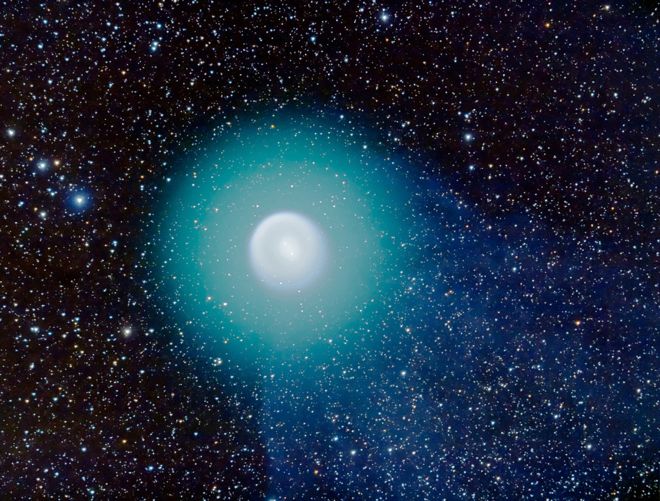
The mysterious, spectacular flare of Comet 17P/Holmes has been observed three times, and it may give warning of an imminent explosion fueled by carbon monoxide gas when it returns in 2014, say astronomers.
Holmes shocked the world in October 2007 when it suddenly brightened by a factor of 500,000, going from a humdrum ball of dust to a brilliant orb visible to the naked eye. The comet spewed 100 million tons of dust into space, comparable to the amount of ash unleashed by Mount St. Helens, and briefly swelled to a diameter greater than the sun's.
But despite months of observations from hundreds of telescopes, the cause of Holmes' dramatic explosion remains unknown.
Astronomers initially suggested that a dusty crust may have formed on the comet's nucleus as it approached the sun, trapping frozen ice underneath. As it neared the sun, the surface would heat so rapidly that the ice turned from solid to gas without even melting. Gas would build up and burst through the crust, sending Holmes' innards flying outward.
Read the rest of the article at Wired.com



The comet may not have been spewing ash. See James McCanney's plasma comet theory!